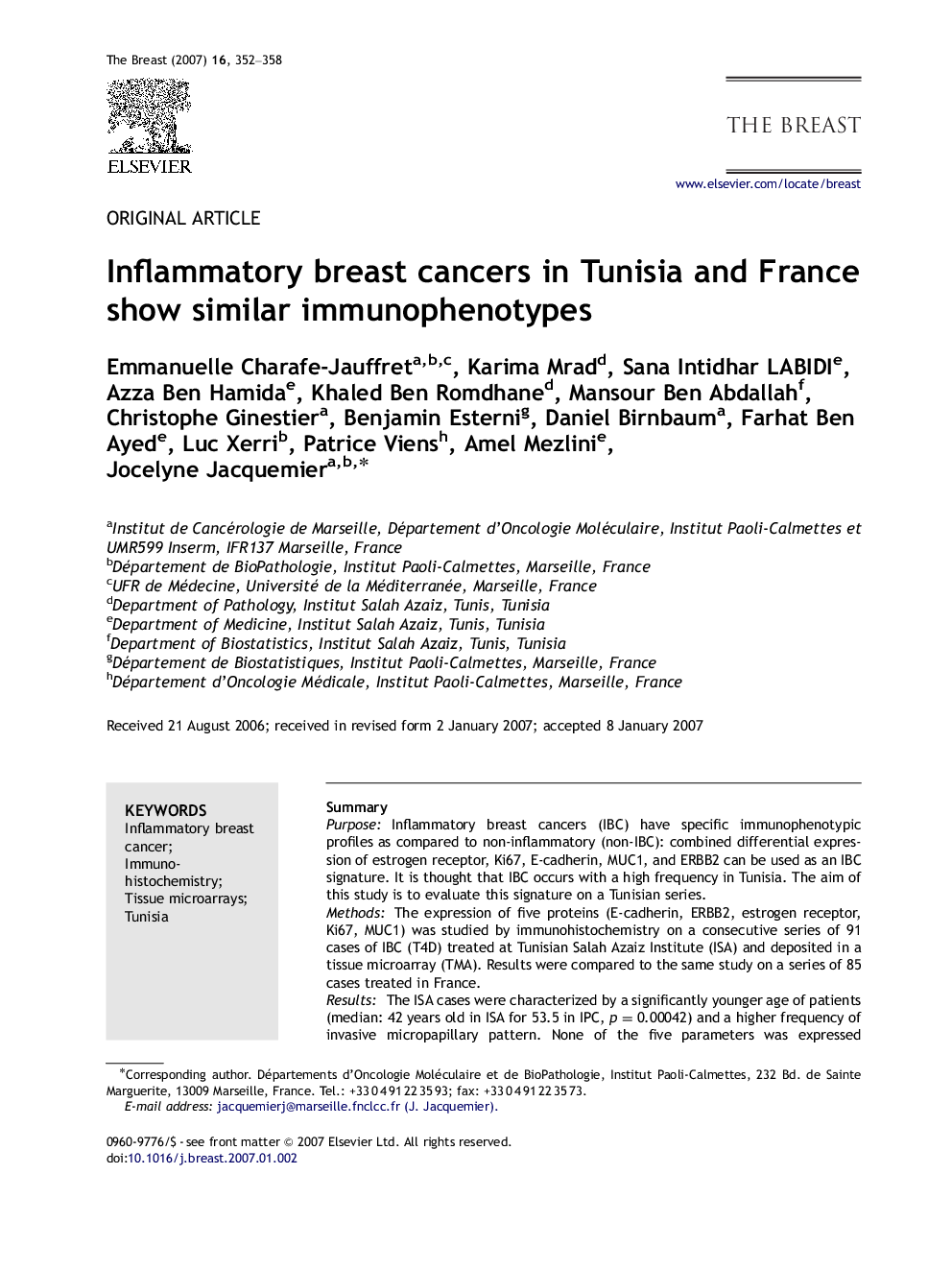| Article ID | Journal | Published Year | Pages | File Type |
|---|---|---|---|---|
| 3909713 | The Breast | 2007 | 7 Pages |
SummaryPurposeInflammatory breast cancers (IBC) have specific immunophenotypic profiles as compared to non-inflammatory (non-IBC): combined differential expression of estrogen receptor, Ki67, E-cadherin, MUC1, and ERBB2 can be used as an IBC signature. It is thought that IBC occurs with a high frequency in Tunisia. The aim of this study is to evaluate this signature on a Tunisian series.MethodsThe expression of five proteins (E-cadherin, ERBB2, estrogen receptor, Ki67, MUC1) was studied by immunohistochemistry on a consecutive series of 91 cases of IBC (T4D) treated at Tunisian Salah Azaiz Institute (ISA) and deposited in a tissue microarray (TMA). Results were compared to the same study on a series of 85 cases treated in France.ResultsThe ISA cases were characterized by a significantly younger age of patients (median: 42 years old in ISA for 53.5 in IPC, p=0.00042) and a higher frequency of invasive micropapillary pattern. None of the five parameters was expressed differentially in the two series. In non-metastatic patients, high level of proliferation (Ki67) and overexpression of ERBB2 were associated with poor outcome.ConclusionThe IBC from Tunisia were not different from those observed in France on the basis of IHC profiles. However, the younger age of the patients suggest a specific epidemiological context that should be investigated.
